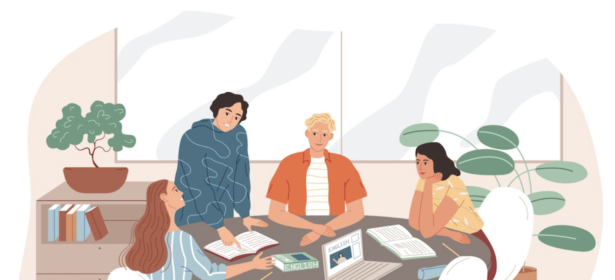The idea of the non-disposable or reusable assignment has been around for a while. The last couple years may have brought new practices and strategy to your teaching and new thoughts about assessment strategies. Perhaps some of those thoughts revolve around designing assessments connect meaningfully with the community outside the classroom bubble in some way. This is one of the fundamental points of open pedagogy and something that can be accomplished through the reusable assignment.
David Wiley coined the term ‘disposable assignment’ in 2013. In his words, “These are assignments that students complain about doing and faculty complain about grading. They’re assignments that add no value to the world – after a student spends three hours creating it, a teacher spends 30 minutes grading it, and then the student throws it away.” He hoped to encourage instructors wanting to move into open pedagogy to address the number of these types of assessments that are given and replace them with non-disposable assignments, or those that either are something of use beyond class to the student or publicly useful in some way. Examples of each type of assessment might include the multiple choice test (disposable), a resume (personally useful) or editing Wikipedia (publicly useful).
Most of our assessments are disposable. Students will not remember them or use them after they leave our classes. Many of these types of assessment test for factual memorization, rehashing ideas presented in textbooks or involve repetitive practice. While this can be part of the learning process, these types of activities do not teach students self-determination or intrinsic motivation beyond getting the grade.
When you think about assignments that were meaningful to you during your academic student career, likely you will not recall most of your exams, papers, or homework. You may remember the few that you worked hard on or some that you missed the mark on or those that put you outside of your comfort zone. Is the work that you put into these assignments of use to you or others now?
A non-disposable or reusable assignment is one that may be published as an open resource, giving back to the greater community of knowledge. When students create an artifact that is shared publicly, they see the process as having greater worth and put extra effort into it. This in-turn can make the assignment more rewarding for us as instructors too, strengthen academic integrity and provide examples for future students.
There are at least eight attributes to open pedagogy as outlined by Hegarty (2015) and Werth (2021):
- Participatory technology: collaboration using the learning management system and other tools for student communication
- People, openness and trust: student agency, group work and autonomy-supported teaching
- Innovation and creativity: student research and freedom to create an artifact of their choosing
- Sharing ideas and resources: class discussions, student-led research
- Connected community: student connections made in and out of the classroom
- Learner generated: student-generated content and ideas throughout the project
- Reflective practice: weekly student reflective exercises
- Peer review: draft review with rubric in the LMS
One addition to the eight attributes might be the ability to openly license student-created work using a Creative Commons license so that the work may continue to be built upon by others.
Some ideas for reusable assignments are:
- contributing to a blog or wiki that is publicly viewable
- recording and sharing a video showing how to do something
- making a crowdsourced map
- creating a poster to share with the department
- publishing a podcast
- sharing ideas and innovations in partnership with local businesses or government agencies to help improve something in the community
- break down larger assignments into smaller parts and include a peer review component as part of a revision cycle
- ‘real world’ skill development
- co-create a living textbook with your students as authors and peer editing
- creating a screencast to showcase understanding of a topic
- co-creation in groups of a shared presentation
Some questions that might be helpful to ask as you think about revising assessments to be reusable:
- How might the work that students are doing in your course contribute to work in other courses or outside the classroom?
- How might the work students are doing contribute to their resume or to a portfolio?
- What connections can you help students make outside of the classroom through an activity?
- How might an assignment be broken down into smaller components to include a revision cycle?
- Where could students publish their work?
Katz and Van Allen suggest a five-step framework and process for redesigning an existing assignment to be reusable. Starting with assessing the current assignment and moving through considering open educational resources and how the assignment may be shared with the broader community and how to consider the appropriate technical tools to use. How to share the idea of openness with students for the assignment through intentional negotiations is the fourth step and then finalizing the revised assessment.
Any assessment activity that can be shared in some way beyond the student-instructor relationship that will lead to openly propagating knowledge about a topic can be used as a non-disposable assignment. Students thus become creators and producers of knowledge rather than passive vessels to fill and they become sources for their peers to learn from. Their work may then have longevity and is something that they could potentially take with them to use as part of a portfolio or on a resume and is an academic activity that they may recall for their entire life.
Reference
- Braunshweig, D. (2018, Feb). Open Pedagogy – Disposable Assignments vs. Renewable Assignments. Academy for Teaching Excellence. Retrieved from: https://harper-academy.net/open-pedagogy/#:~:text=Most%20assignments%20students%20complete%20are,anyone%20with%20similar%20interests%20worldwide.
- Seraphin, S. B., Grizzell, J. A., Kerr-German, A., Perkins, M. A., Grzanka, P. R., & Hardin, E. E. (2019). A conceptual framework for non-disposable assignments: Inspiring implementation, innovation, and research. Psychology Learning & Teaching, 18(1), 84-97.
- Anwar, R., J. Kalra, M. Ross, D. Smith, V. Vogel. Encouraging academic integrity through a preventative framework, BC Campus. Retrieved from https://pressbooks.bccampus.ca/encourageacademicintegrity/chapter/renewable-assessments/
- Hegarty, B. (2015, July/August). Attributes of open pedagogy: A model for using open educational resources. Educational Technology, 3-14. https://www.scribd.com/doc/276569994/Attributes-of-Open-Pedagogy-A-Model-for-Using-Open-Educational-Resources
- Katz, S. and Van Allen, J. (2020). Evolving Into the Open: A Framework for Collaborative Design of Renewable Assignments. Retrieved from: https://academicworks.cuny.edu/cgi/viewcontent.cgi?article=1313&context=le_pubs
- Werth, E. and K. Williams. (2021). Learning to be open: instructor growth through open pedagogy. Open Learning: The Journal of Open, Distance and e-Learning. https://doi.org/10.1080/02680513.2021.1970520
- Werth, E., & Williams, K. (2021). What Motivates Students About Open Pedagogy? Motivational Regulation Through the Lens of Self-Determination Theory. The International Review of Research in Open and Distributed Learning, 22(3), 34-54. https://doi.org/10.19173/irrodl.v22i3.5373
- Wiley, D. (2013). Killing the Disposable Assignment. improving learning. Retrieved from: https://opencontent.org/blog/archives/2975
Suggested Reading
- Delgado, F., A. Stratford, A. Suzuki, M. Ryan, A. Cummings, J.M. Skidmore, K. Kautzman. (2022). Beyond the Traditional Essay: Increasing Student Agency in a Diverse Classroom with Nondisposable Assignments,. 1st ed. 140pps. ISBN: 978-1-64889-408-4
- Paskevicius, M. and Mattar, L., Why Stop at an Assignment? Engaging Students with Collaboratively Creating an Open Online Textbook. The Non-Disposable Assignment: Enhancing Personalised Learning. BCcampus.



